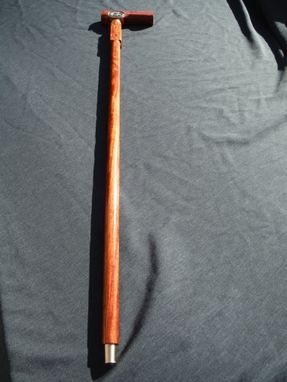

Although I have learned many things about collecting, I have much to learn. Why a web site? I am proud of the antique cane and walking stick collection I have amassed over the past several years.
#FUN WALKING CANES TRIAL#
I have learned many things from books, attending auctions, watching on-line cane auctions, speaking with other antique cane and walking stick collectors, and mostly by trial and error.

And although I did not start collecting antique cane and walking sticks as an investment, it has certainly become that. I am passionate about my antique cane and walking stick collection. Antique canes and walking sticks are remnants from the past, small mysteries begging discovery. And the many unanswered questions such as where does the stick come from? Who was the owner? What clues can I find to help me determine age or place of origin? Is the stick historically significant? A friend of mine, also an antique cane collector, commented that that’s part of the fun of collecting people’s old dreams, accomplishments, and acknowledgements from loved ones. Of course there’s the hunt and discovery. Or, because there is such a large variety from which to choose. Perhaps it’s because of the implied intimacy a walking stick is held by the hand, lovingly caressed by its owner. Over the years, canes and walking sticks, rods and staves, have been the subject matter of articles, some of which I include in this website for your reading enjoyment. As a cane collector, I have enjoyed expanding my hunt to include Civil War connected canes. Discovering two Minie Balls rekindled my interest. I filed this budding interest away for a later time. Neither my husband nor I could remember where they came from, but their discovery reminded me that years before I had bought my son a book on the Civil War, and although he had only a passing interest, I was fascinated. As I researched this fascinating period and its intersection with my new home state, I discovered that on during the Pike’s Peak Gold Rush, a prospector discovered placer gold at the present site of Idaho Springs, the first substantial gold discovery in Colorado, only 60 miles from my home!Ī couple years ago I was digging through a box I had long packed away and uncovered two Civil War bullets. More than 300,000 gold seekers flooded California by 1850. Gold was discovered in early 1848 in the Sacramento Valley which sparked the California Gold Rush, turning California into a truly global frontier. How many of your ancestors were part of these amazingly resilient groups of pioneers?

Wagon trails were cleared increasingly further west and by 1842-1843, the number of emigrants skyrocketed. The Oregon Trail was laid by fur trappers and traders in the early 19 th century, with the first migrant wagon train organized in Independence, Missouri in about 1836. Shortly thereafter I began studying the history of western expansion and the Great movement west. Most of all, we are inspired by the “thrill of the chase!” Other reasons why we collect: nostalgia and a connection to history, social interaction with other collectors, appreciation of beautiful objects, knowledge and learning, relaxation–and it’s FUN. I have been a cane collector ever since.Īt some point we collectors experience an epiphany, an “ah ha” moment where we realize we are motivated by a deeper calling, an internal drive to collect a particular object or objects “I collect, therefore I am.” Motherhood and a full-time work schedule shelved my collecting impulses until 1998, when I was given a book, “Canes Through The Ages” written by Francis Monek, and discovered the world of canes. I began collecting bisque and china head dolls before the birth of our first son out from storage came Tiny Tears and Ginny. Over the years I have collected demitasse cups, Victorian Majolica (I love the jewel colors of the translucent lead glazes and the organic shapes of the pottery) and other shorter lived interests. During that time I learned the joy of arrowhead hunting walking cornfields in Southern Illinois. As a college student in the early 1970’s, I began collecting old bottles and railroad date nails, inexpensive treasures easily found at flea markets or walking along abandoned railroad tracks, a perfect pastime for one with limited means.


 0 kommentar(er)
0 kommentar(er)
